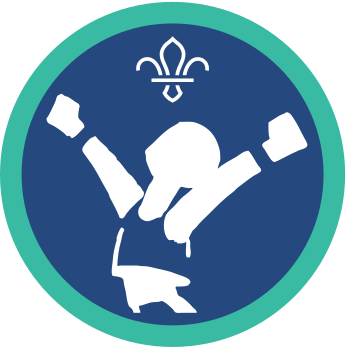Horse riding
What to expect
Horse riding has been a mode of transport for thousands of years and is both a form of recreation and a competitive sport. Horse riding is typically done in a riding school in classes, which are tailored to different levels of experience. You could also go on hacks or treks, which involve travelling through the countryside on horseback. Before you mount your steed, you’ll need to put a helmet on, which will usually be provided by the stable.
What you’ll learn
Horse riding can give you a lot of skills, including balance, coordination and care. It’s also a great way of staying fit and healthy. Being in control of a horse can give you a sense of independence and helps you understand how to safely and confidently ride the horse in a way that takes other people into account, so you don’t run into them. Enjoy the experience and see what it feels like to move around on an animal rather than a machine.
Fun facts
There are many different variations of horse riding around the world, including rodeos, cross-country jumping and horse racing. Horse riding has been an event in the Olympics since the 1900s, but today there are three equestrian sports in the Olympics and Paralympics: dressage, show jumping and three-day eventing. These events allow people to compete individually or in teams, and it’s one of very few events in the Olympics where women compete equally with men.
Handy hints
- Bring some hair bobbles. Some places may ask anyone with long hair to tie it back, so bring some spares along just in case.
- Bring your camera with you. Getting lots of pictures of everyone horse riding will give you mementos to look back on later. Remember to bring your camera along with you to take some snaps.
- Something to drink. All that exercise can be tiring work, so encourage everyone to bring a drink along with them. Have some spare drinks too, if needed.
Safety
You must always:
- Complete a risk assessment
- Have the right ratios of number of adults to provide suitable supervision
- Set up an InTouch process
- Know what to do in an emergency
- Share information with parents and carers with an activity information form
- Get approval from your Lead Volunteer.
Be safe outdoors:
- Check the weather forecast
Horse riding:
- Everyone must wear a helmet whilst horse riding, exemptions apply
Joint activities with other organisations:
- This activity can be run jointly with Girlguiding.
- This activity can be run with other organisations.
This activity can be led by you or someone else in Scouts:
- Acceptable instructor qualifications
- British Equestrian Federation - Approved body or club
You can go to a centre or use an activity leader who is not part of Scouting:
You must find a suitable provider who meets the following requirements:- The centre/instructor should hold one of these:
- British Equestrian Federation - Approved body or club
The provider must have public liability insurance.
Guidance
Reflection
Learning to ride a horse gives you the opportunity to be active, learn new skills and develop old ones. You’ll learn how to confidently and independently control the horse in a paddock or on a trek with your friends. If you were to do this again, what new techniques that you picked up would help you excel the next time? Think about how you held your hands, how your feet rested in the stirrups and how you positioned yourself in the saddle.
Being in a paddock helps to keep the horses together. How would you change your approach to stay in control if you were to go on a hack or trek? Think about how long the reins might need to be and how that may affect the control. Also think about keeping a good distance between you and the horse in front, and how that may change once you’re out in the countryside.
Longer rides over rougher terrain will present the group with more of a challenge. Experienced riders may be able to lead their horse around an arena showground with obstacles like jumps. Remember to risk assess these! Those who are new in the saddle are probably best trotting around a paddock to get a feel for the horse’s gait and the horse-riding equipment.
- Horse riding can often be adapted so more people can give it a go. Many centres have facilities that cater for people with additional needs and experienced instructors to help everyone achieve their goals. Get in touch with your local provider to chat through the needs of people in your group. Make sure you give them plenty of notice.
- If someone isn’t confident enough to get onto a horse, give them an opportunity to ‘get to know’ a horse beforehand. They could groom the animal or stroke it to form a bond and build their confidence.
- Have a look on the Riding for the Disabled Association’s website for more information on riding schools and how to get involved.
- Some people may have allergies to horses or hay/straw. Make sure you check with everyone to see if this can be managed throughout, or to establish whether they can take part in the activity.
All Scout activities should be inclusive and accessible.
If someone has enjoyed this adventure, encourage them to find a local riding school, or to have a go at the Scouts Equestrian Activity Badge and other adventures such as pony trekking.
If anyone has done this before, encourage them to share their knowledge with everyone beforehand. They could do a presentation or have a chat with everyone about what to expect in the activity.




